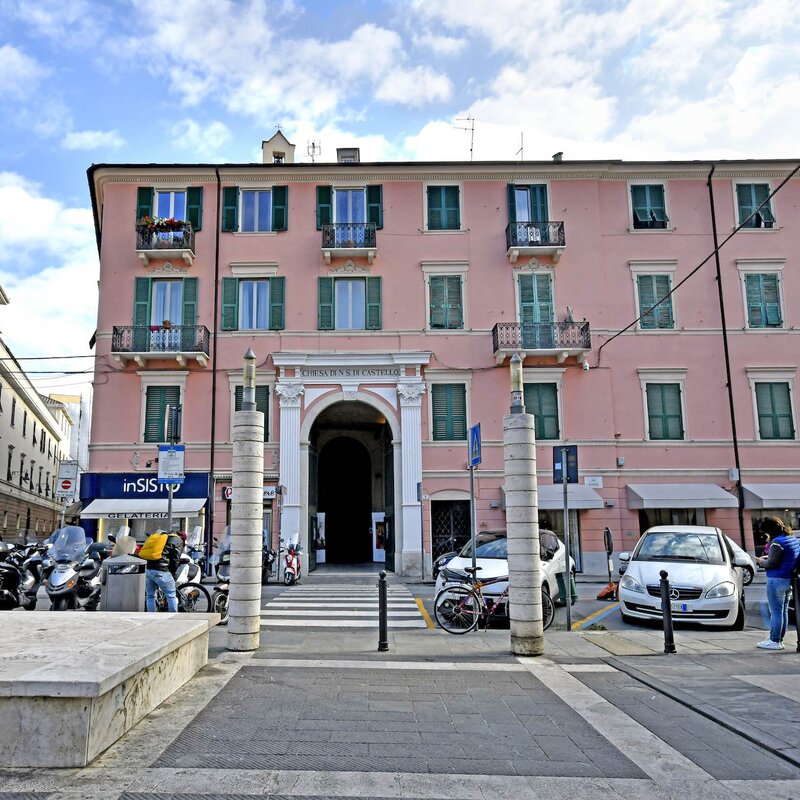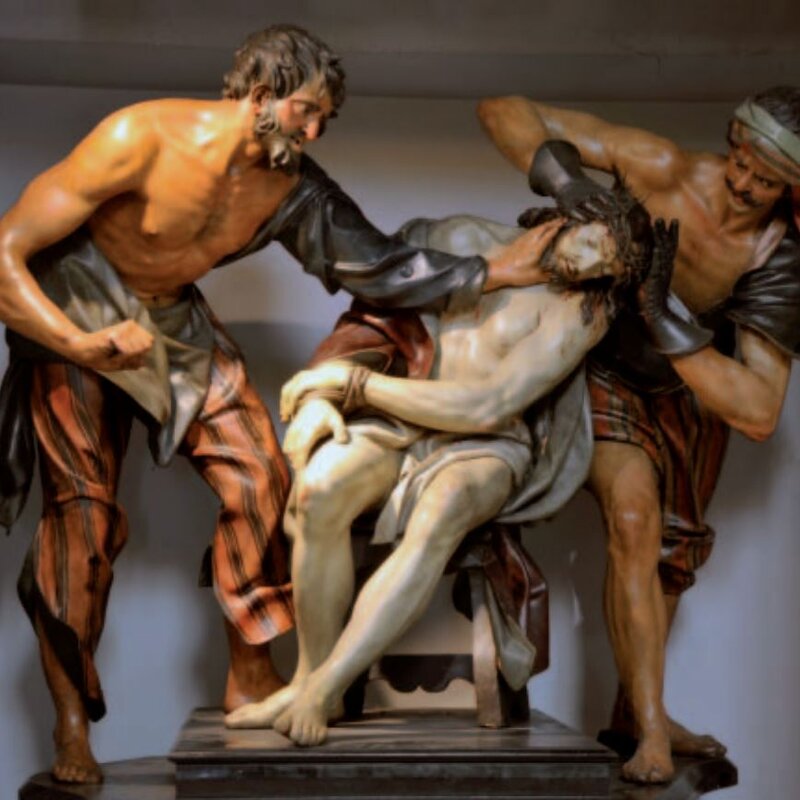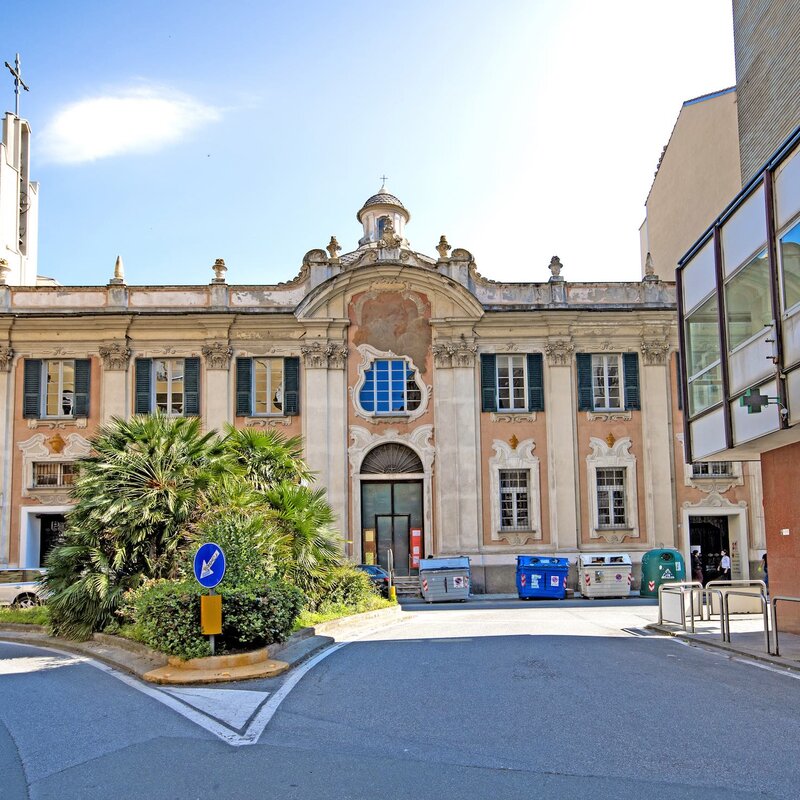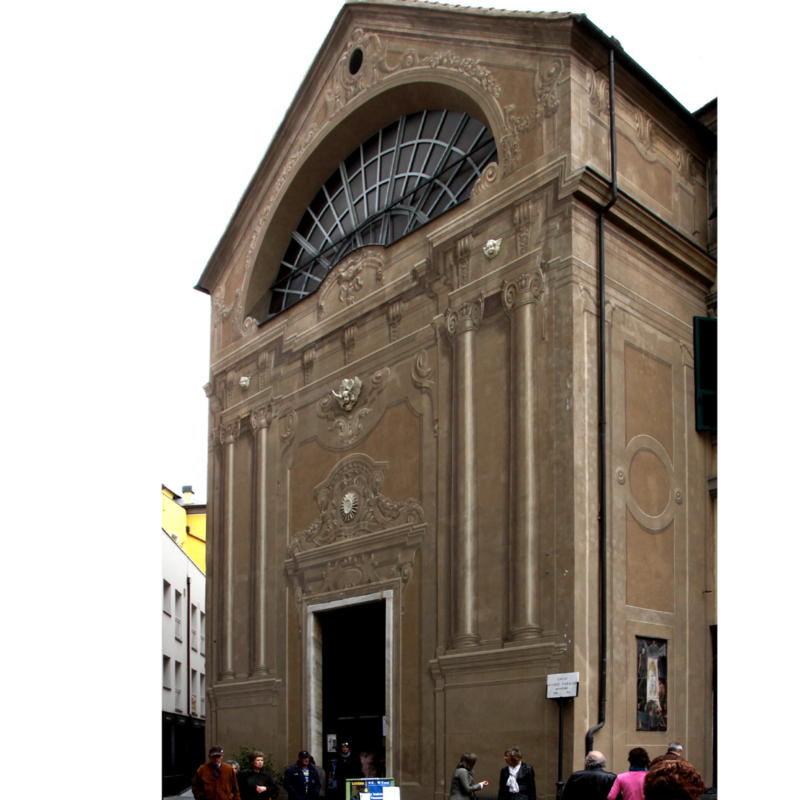Oratory of Saint John the Baptist, Saint John the Evangelist and Saint Petronilla
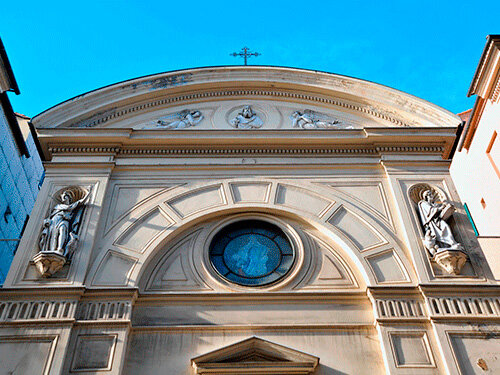
Ten oval tablets, depicting “Episodes of the Life of John the Baptist”, painted by Giovanni Agostino Ratti, during the first half of the 18th century, dictate the visual rhythm of the interior space. The eye, however, is immediately caught by four beautiful wooden floats, three of which were made by well-known Genoese artist Anton Maria Maragliano and one by Filippo Martinengo.
The processional floats - depicting respectively “Christ at the Column”, “The Agony in the Garden”, “Jesus Christ Expiring on the Cross” and “The Redeemer’s Promise” - are carried in procession on Good Friday by the brothers, wearing white capes tied with red ribbons (the confraternity’s official uniform since 1826). In 1526, when they were still based on the Priamar promontory, the two confraternities had already been unified into one. Later, their main focus of devotion was extended to include Saint Petronilla. With the construction of the Fortress by order of the Genoese, all religious buildings on the site were destroyed and rebuilt elsewhere at a later time.
One of such religious buildings was the Oratory in question, which was re-erected near the Franciscan complex in 1546. In 1650, the building was destroyed by a fire and was later rebuilt, to reach its full splendour during the 18th century, with the addition of new decorations and beautiful wooden sculptures. In 1887, the building was expropriated to make space for the growing town.
Surviving elements only include a slate overdoor, depicting “The Virgin Mary Among Saint John the Baptist and Saint John the Evangelist” and a marble relief of “Saint John the Baptist with a Female Saint”. The confraternity, dispossessed of its historic seat, was forced to build a new one the following year (1888). The new project closely reproduced the layout and size of the old one, so as to make space for all of the confraternity’s artwork possessions.
The façade was decorated in 1891, when new stuccoes and statues of Saint John the Baptist and Saint John the Evangelist (two of the saints to which the Confraternity is devoted) were added.
